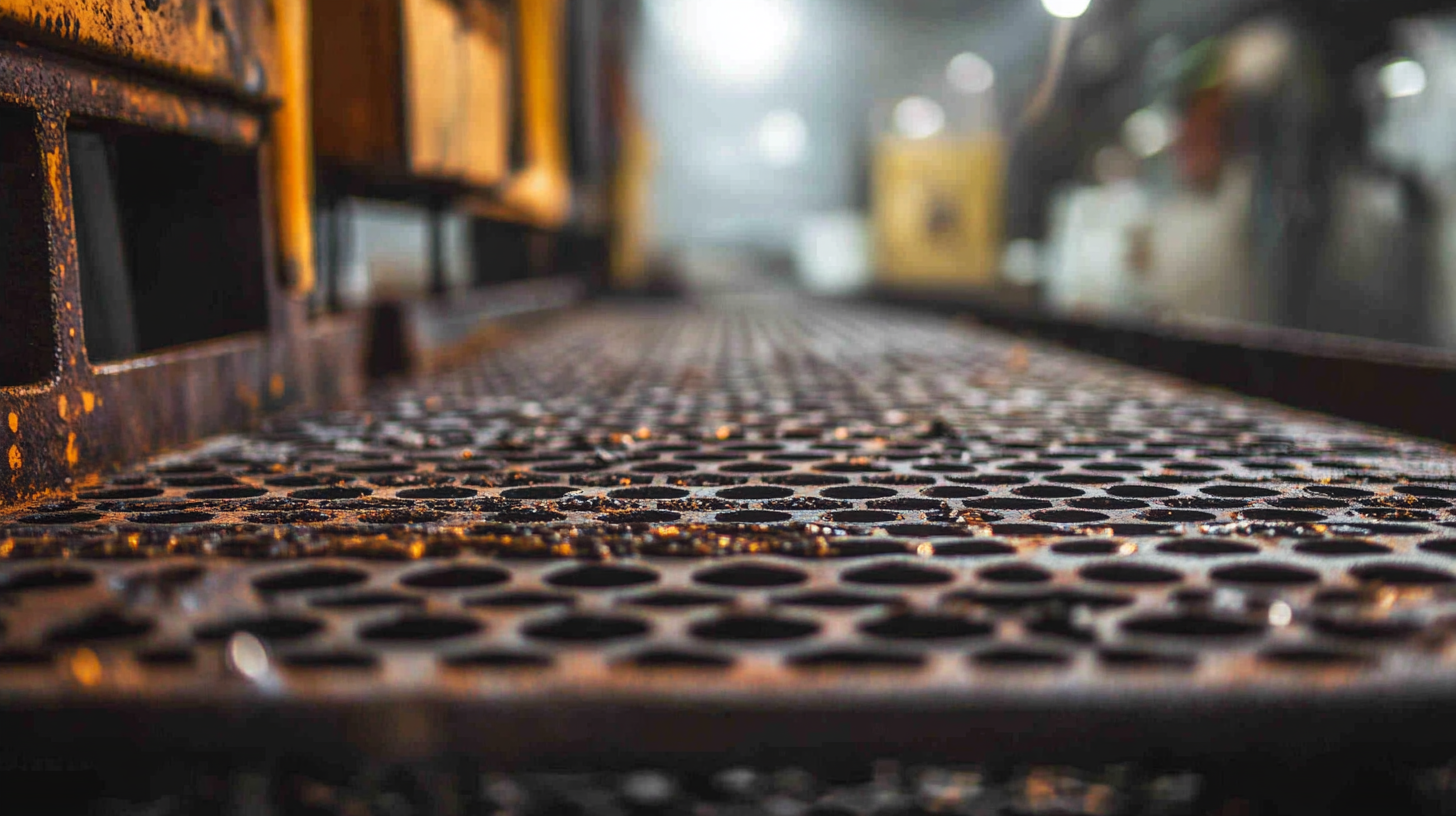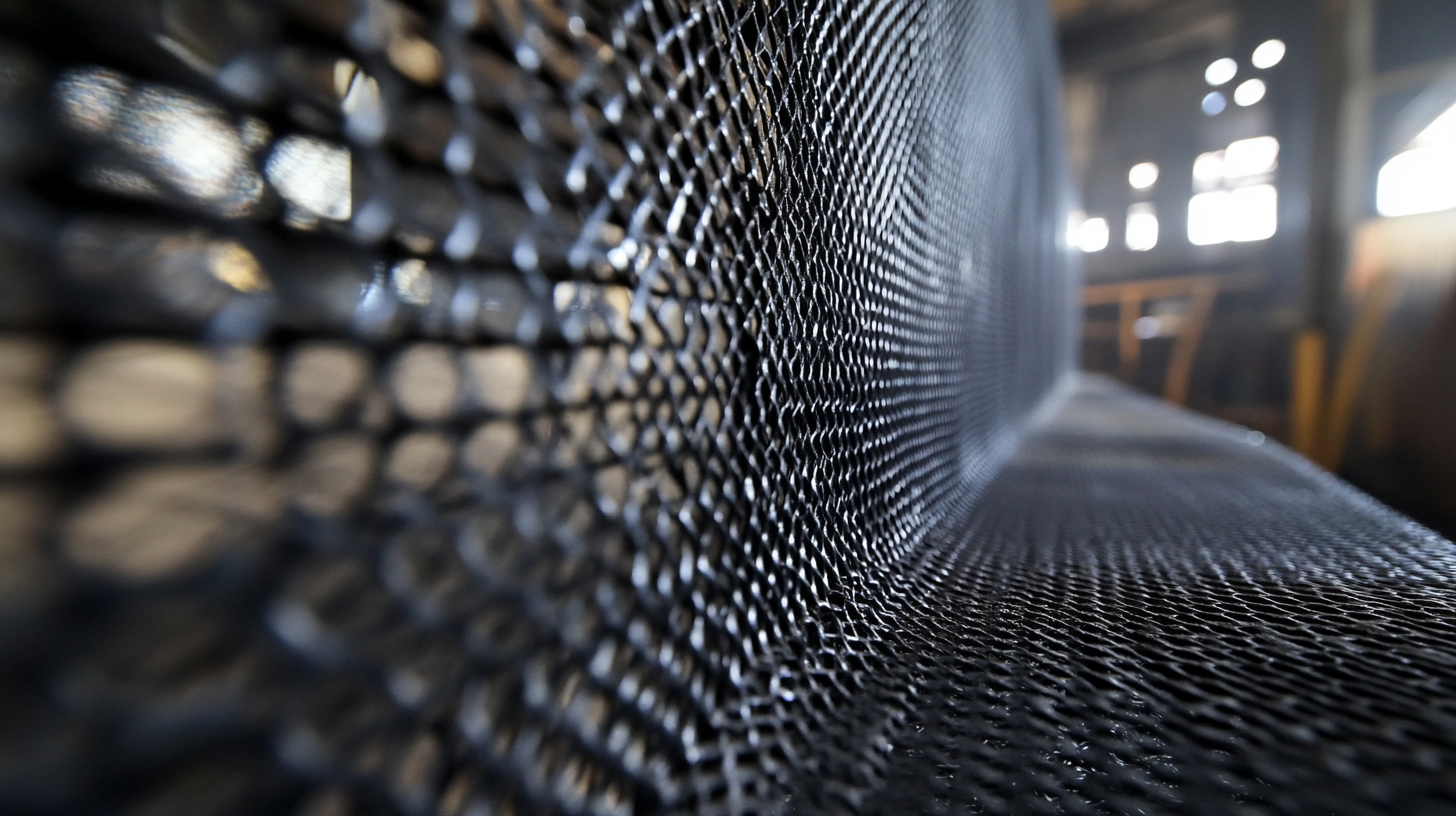In recent years, the trade tensions between the United States and China have created significant challenges for many industries, yet the Decorative Expanded Metal sector in China has demonstrated remarkable resilience and growth. According to a recent market analysis, the global expanded metal market is projected to reach approximately $8 billion by 2025, with decorative applications driving a substantial share of this growth. Even amidst the imposition of tariffs, the Chinese manufacturing industry has adapted through innovation and supply chain optimization, allowing it to not only maintain but expand its market share. The unique versatility and aesthetic appeal of Decorative Expanded Metal have positioned it as a preferred choice in various applications, from architectural facades to interior design. This blog will explore the factors contributing to the thriving state of the Chinese Decorative Expanded Metal industry despite the ongoing tariff challenges, highlighting potential strategies for sustained success in a turbulent global market.

China's decorative expanded metal industry has showcased remarkable resilience in the face of escalating US-China tariff challenges. As businesses navigate a landscape marked by shifting trade policies, they continue to innovate and optimize production processes. By diversifying their product offerings and targeting new markets, Chinese manufacturers have managed to sustain growth, demonstrating their adaptability to external pressures.
Tip: Embracing technology is vital for overcoming tariff-related hurdles. Companies should invest in modern manufacturing techniques and automation to increase efficiency and reduce costs. This not only enhances product quality but also strengthens their competitive edge in an increasingly complex global market.
Moreover, collaboration with domestic suppliers has proven beneficial for many firms. By fostering local partnerships, businesses can reduce reliance on imported materials, which are subject to tariffs. This strategy not only minimizes operational costs but also supports the local economy, creating a more robust supply chain that can withstand external shocks.
Tip: Regularly conducting market research is essential for understanding evolving customer needs and preferences. By staying attuned to market trends, businesses can better align their products with what consumers want, ensuring continued demand despite economic uncertainties.

China's decorative expanded metal industry has shown remarkable resilience despite the challenges posed by US tariffs. To navigate these obstacles, Chinese manufacturers have adopted various strategies to mitigate the impact of increased costs associated with tariffs. One effective approach is diversifying their supply chains. By establishing partnerships in new regions, manufacturers can reduce their reliance on imports from China, thereby shielding themselves from tariff fluctuations.
Additionally, many companies are focusing on enhancing their production efficiencies. This could involve upgrading equipment or optimizing processes to lower operational costs. Such innovations not only help to maintain competitive pricing even with tariffs in place but also improve product quality and delivery speed.
**Tips for manufacturers:**
1. **Explore new markets:** Identifying and expanding into emerging markets can help offset losses incurred in the US market.
2. **Invest in technology:** Leveraging advanced manufacturing technologies can streamline operations and ultimately reduce costs.
3. **Legal reclassification:** Consider evaluating product classifications to identify potential exemptions or lower tariff rates.
These strategies exemplify how proactive measures can bolster the industry's sustainability amidst changing trade landscapes.

Amidst the backdrop of US-China tariff challenges, China's decorative expanded metal industry is leveraging innovation and technology to foster growth within its manufacturing sector. According to the Ministry of Industry and Information Technology, the scale of China’s manufacturing industry remains robust, maintaining its position as the largest globally for 15 consecutive years. In 2024, industrial output is projected to increase by 5.8% year-on-year, reflecting a commitment to enhancing productivity and quality in manufacturing processes.
Key to this transformation is the focus on high-tech development. President Xi Jinping emphasized the importance of transitioning from mid to high-end manufacturing, highlighting the necessity for innovation to drive efficiency. The emergence of over 600,000 technology-driven enterprises demonstrates the significant role of innovation in cultivating new growth momentum. For instance, advancements in artificial intelligence and automation are redefining operational efficiency across industries, positioning China as a leader in both output and technological capability.
Furthermore, the burgeoning sectors such as new materials and robotics exemplify the innovative spirit powering the industry. With a strategic push towards high-efficiency production and sustainable practices, the decorative expanded metal industry stands poised not only to navigate external challenges but also to leverage new technological advancements that will define its future trajectory.
China's expanded metal industry is experiencing significant growth, especially as global market opportunities arise. According to recent forecasts, the global vanadium market is projected to reach a value of $3.46 billion by 2024, increasing to $3.62 billion in 2025 and climbing to $4.89 billion by 2032. Such market dynamics present an excellent opportunity for China's expanded metal products, which are versatile and increasingly in demand in various sectors.
As industries such as metal alloys continue to expand, with an estimated global market value of $343.7 billion by 2024, the demand for high-quality metal components is set to rise. The anticipated CAGR of over 4.5% from 2025 to 2034 indicates a robust growth trajectory, showcasing the potential for China to enhance its export capabilities.
**Tips:**
- Businesses aiming to enter international markets should prioritize establishing partnerships that align with local demand trends.
- Continuous innovation and quality improvements can offer a competitive edge in the expanding global market for expanded metal products.
This pie chart illustrates the market share distribution of China's decorative expanded metal products across different regions in 2023. North America holds the largest share at 25%, followed closely by Europe at 30%. The Asia-Pacific region accounts for 20%, with Latin America and the Middle East & Africa contributing 15% and 10% respectively.
The decorative expanded metal industry in China is navigating the complexities of US-China tariff challenges with resilience and strategic foresight. According to a report by MarketsandMarkets, the global decorative metal market is projected to reach $9.12 billion by 2025, driven in part by rising demand for architectural and interior design applications. Despite the tariffs imposed on Chinese exports, China's manufacturers are adapting by enhancing their production efficiency and exploring new markets, thus maintaining a competitive edge.
Future prospects for China's decorative metal sector appear promising, with innovations playing a pivotal role in overcoming tariff-related obstacles. The introduction of advanced manufacturing technologies has increased production capacity while reducing costs. A recent study by Research and Markets highlights that the Asia-Pacific region, particularly China, is expected to dominate the decorative metal market, holding a significant share due to its robust industrial base and growing exports to emerging economies. As Chinese companies continue to innovate and diversify their product offerings, the sector is well-positioned to capitalize on global trends and navigate evolving trade dynamics.
| Year | Market Value (Billion USD) | Growth Rate (%) | Main Export Markets | Challenges |
|---|---|---|---|---|
| 2021 | 5.2 | 8.3 | USA, EU, Japan | Tariffs, Supply Chain Disruptions |
| 2022 | 6.0 | 15.4 | USA, Canada, Australia | Increased Tariffs, Trade Tensions |
| 2023 | 6.8 | 13.3 | USA, UK, Southeast Asia | Raw Material Costs, Competitive Pricing |
| 2024 (Projected) | 7.5 | 10.3 | USA, Europe, Latin America | Sustainability Regulations, Innovation Demands |
